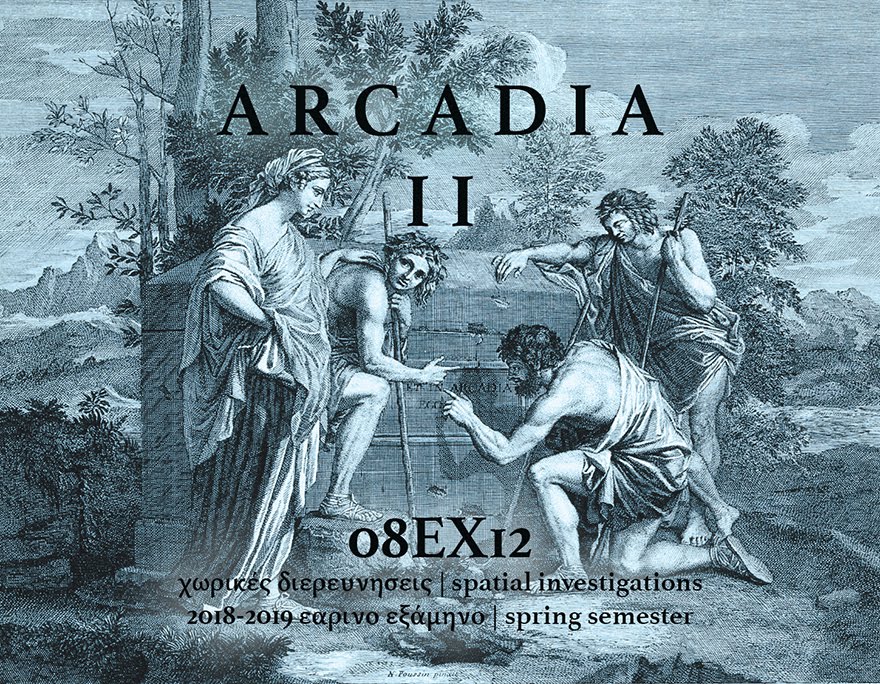Introductory design workshop
ARCHITEXTURES :: Vassilis Chlorokostas
School of Architecture, AUTH :: 17-18 January 2013
coordination: Anastasios Tellios
τα projects των συμμετεχόντων εμφανίζονται επίσης στο Texture Follows Form
1. Alkiviadis Corbise
The project uses the extracted digital data of an image and produces a
pattern. This pattern applies to a
surface and gets transformed relative to the curvature of the geometry. An alternating pattern emerges giving a three dimensional space with many
different spatial qualities. Simple changes
on the curvature of the base geometry
changes the height of the pattern’s units providing new spaces.
2. Arsenios Zachariadis
3D LAce :: The aim of the project was to develop a structure that looks like a 3d lace considering transparency and shadows. Create small mesh balls like dust around some "rail" curves in different intensity and population depending on external attractors. Using unified skin it creats a mesh. Scaling in the faces boundaries and moving up parallel to face normals i create a 3d transparent mesh. Using subdivision in a deep level the result was a structure that looks like a 3D lace.
3. Dimitris Siokis
Neurological
zombification :: The
project focuses on the study of a virus (polydna virus) and on the procedure of
its evolution in the interstitial space of its host, the body of a caterpillar.
The double layer that defines the inner and the outer space is gradually
inhabited by the parasitic virus. At first, the parasite develops dependency
relationships with the two walls and then tends to attach to them. In that way
the parasitic virus tries to establish itself within the organism. In order to
achieve that, each unit communicates with each other, creating networks in the
interspace with interesting spatial qualities. An extra layer of protection and
filtering is created by the virus in order to defend itself against future
intruders.
4. Efi Kasimati
Material Matters :: The project deals with the notion of material potency, meaning that the overall design process and performance capacities of a system emerge from the investigation of the material and not by imposing a determined behaviour. Principles of nature forms, such as bone tissues, are considered as design guidelines. The material, structure and form of the bone are all interrelated in its formation, behaviour and performance. So, one can argue that the material itself is the component and the material system at the same time. Complexity and self-organization are investigated in a molecular level and the overall morphology and structure are the result of the synergetic relationship between micro and macro levels.
5. Eleanna Panagoulia
This project attempts to examine a complex form that
is generated from a three dimensional subdivision process. In this example, the
initial – input geometry consists of primitive geometry elements, particularly,
an array of box elements, which form a box cloud. Through predetermined
subdivision processes, the initial form in transformed into a complex surface –
mesh. The change in the division values affects the softness and the formation
of patterns in the final geometry. The form that is generated from this process
does not yet have architectural and special qualities, as it makes no
distinction between surface, volumes and structure. It rather illustrates an
autonomous procedure of form complexity.
6. George Hussen
7. Kyriaki Goti
Doubting Darwin: Evolution _ metamorphosis _ metalaxis :: According to Darwin the form of each organism is determined by its DNA. However, butterfly changes its form in every life stage, maintaining its DNA. What if butterfly’s metamorphosis doubts Darwin’s theory? The story begins considering that butterfly has a genetic code, some parts of which are being hidden and some revealed, depending on the circumstances and determining the form of each life stage. Research investigates the results of a possible DNA mutation. How could the form of this “metallaxis” be?
8. Stefania Orfanidou
The whole concept of the project began from the idea of a penetrated surface, that would filter the sun light and would give a special effect, while walking from beneath. While working on this surface, new elements came up and new spatial forms appeared. The surface started transforming into a topology itself, where different qualities of space where created.
9. Stratis Georgiou
Reef :: 'Reef' introduces the creation of an "artificial" ecosystem implemented to a ìnaturalî one, speculating on the natural/artificial dipole rapture. Possibly situated in highly polluted sea areas, this ìartificialî reef - a rather simple structure, consists of a horizontal grid and nets hanging from it, further claded with bio-synthetic corrodible material - aims to the ecosystem's regeneration and retriggering, providing vital sources and proper conditions for the sea flora and fauna and at the same time functions as a filter, absorbing toxicants and pollutants. As part of the two-day workshop "Texture Follows Form", which was introduced by Vasilis Chlorokostas, and whose theme was the introduction to the manipulation of mesh geometries by subdividing algorithms and the "emergence" of unpredictable outcomes through these phenomenally "deterministic" logics, ìReefî further speculates the uncertain formal evolution of this ìartificialî reef at a further, corroded state, affected by and affecting the ìnaturalî sea ecosystem.

10. Stella Rossikopoulou Pappa





















